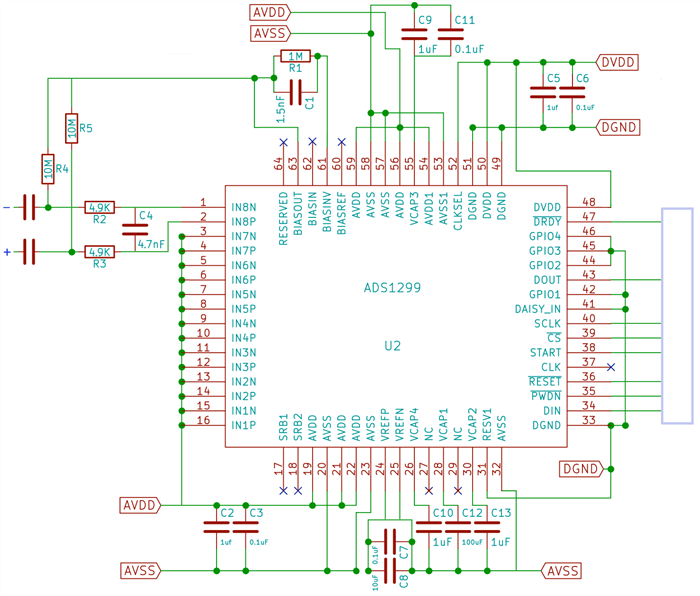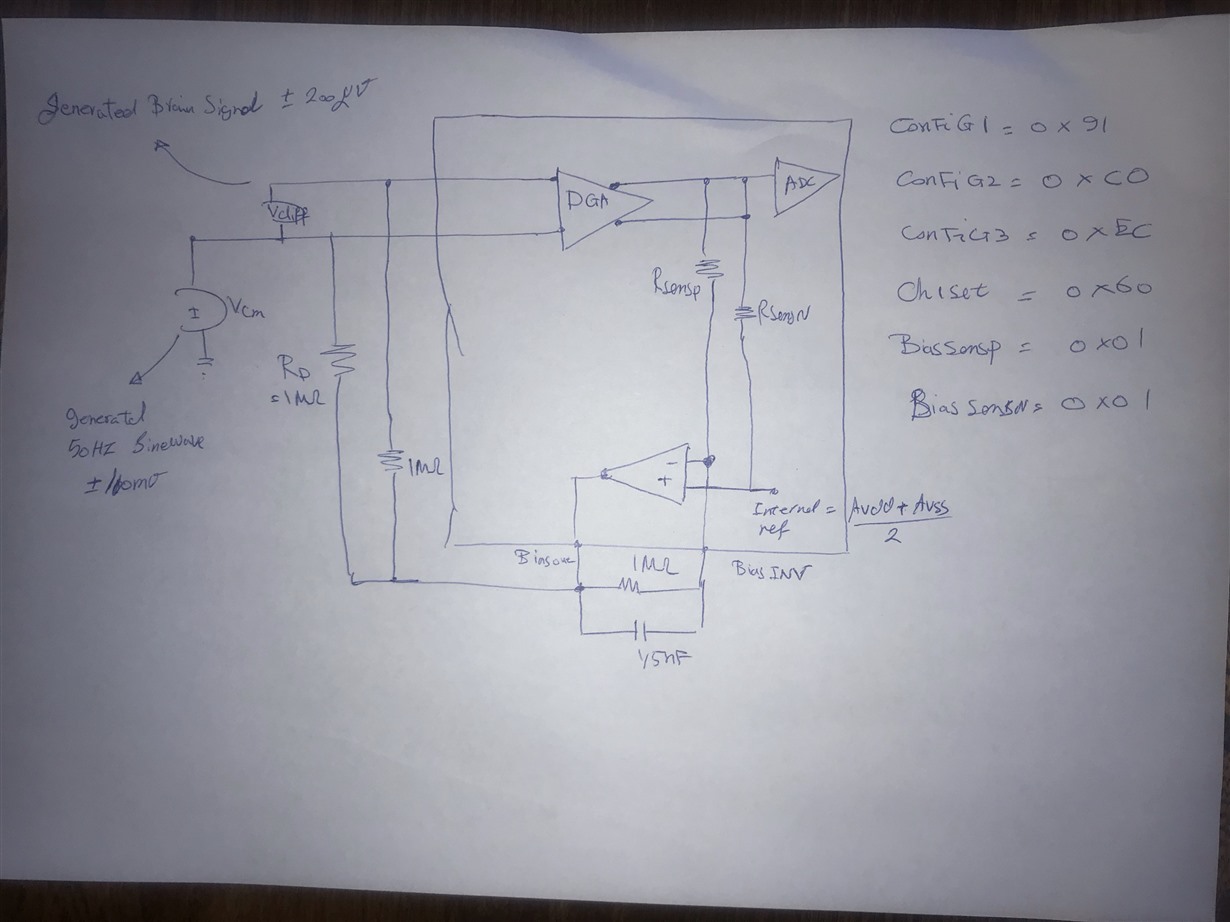Hello,
I am using ADS1299 ADC to record cortical signals (1Hz- 4000 Hz Bandwidth) with inside-brain implanted electrodes. I am successfully reading 8 channels with 8Ksps with gain 24 in referential montage. My main issue is bias signal on my channels that sometimes clips the output. As you can see in this picture, in 32 seconds the output has saturated because the input was bigger than Vref/ Gain =104 mv (Vref=2.5, Gain=24)
My question is that, can only adding AC coupling capacitor (series caps) on all channels remove the DC offset? If yes why do we need to consider bias amplifier ?
I have included a circuit for bias driver. I am going to activate the SENSP and SENSN bits of all channels to make an average common-mode signal and then connect the Biasout with below configuration. Is this a correct way to remove the DC offset.
I also do not understand the function of Multiplexing BIASN with input channels? Does it have the same function as the below configuration.
Thank you,





